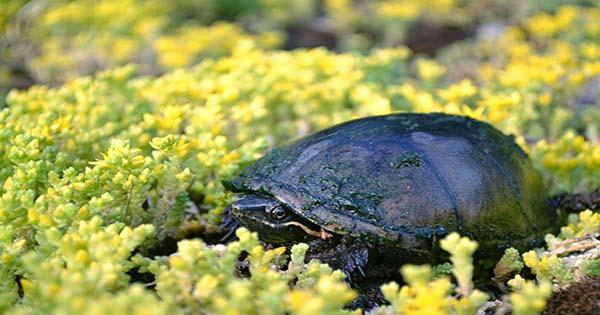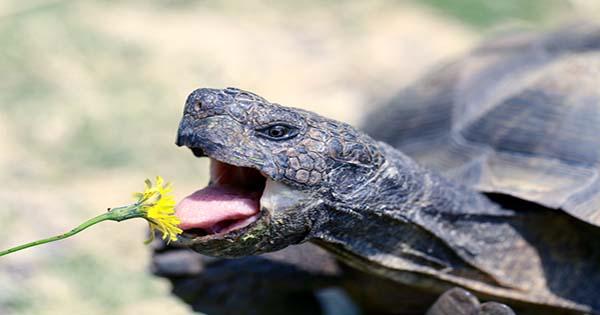Turtles have a reputation for being a little slow, but these armored reptiles can actually be very fast when they want to (mess with the tart and you get injured). Videos of dancing turtles have become an internet sensation, often seen fluttering their feathers under a stream of water. The welcome material mostly found in one species: the radiant tortoise whose behold is like watching a rain dance.
Behavior has observed in a few tortoise species, but the most famous predatory turtles are the shawl turtles, which are quite large, weighing about 16 kilograms (36 pounds) and have long legs that allow them to lift their bodies completely off the ground. Their brown shells are quite bulbous and have dome-like yellow stripes on their backs that inspire their common name to look like the rays of the sun.

Unfortunately, these charismatic species critically endangered in the wild, but they have seen success in breeding programs that are able to maintain genetic diversity among captive animals. One such zoo tortoise is Turnip, a 12-year-old woman from Madagascar who radiated turtles from the Tennessee Aquarium in Chattanooga, USA. Turnip has recently become one of the most famous features of the species: the radiant tortoise has become a social media star for performing rain dances.
Scientists have not yet written the exact inspiration behind the rain dance, but in captivity, these animals have found to find sensations that appear with random aspirations. An email to IFLScience told Tennessee Aquarium, “No real motive for the behavior was known until I found out.” They feel the sensation in their shells and will often find sensations like rain or low hanging branches. Here in the aquarium we occasionally rub against them with a brush and they behave this way, but not as enthusiastic, as they are with the shower not only makes us believe that they really enjoy it, because they actively explore it.”
“They’re surprised to see so many people can feel through their shells,” says Maggie Sip, and Tennessee Aquarium animal care expert. “If something touches, we try to match it with what you feel with your fingernails.” Madagascar, where Turnip-like rocks are present, has a tropical climate. The humid season lasts in summer and extends from November to March, where the conditions from April to October are mostly dry and mild. However, it could be that the arrival is a welcome change in the weather of these animals, or a way for the wiggle to shake the heavy rain from behind. A definitive explanation for this behavior remains too seen, but one thing that certain is Turnip’s move.
“All of our radiated turtles do a little bit, but Turnip really” removes it, “says Sipe, who filmed this famous video.”Our older woman does not dance as much as she just stretches her hips. The two boys in the shelter chase me around when my hose comes out because I think they’ve learned what it means, so their dance videos.” It is hard to find because they came to me for rain.” In Taylor Swift’s immortal words, heartbreakers are about to take a break. Fakers will fake. Baby, Turnip will just tremble.
















